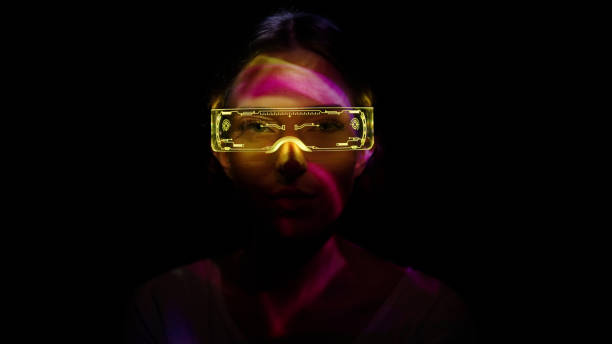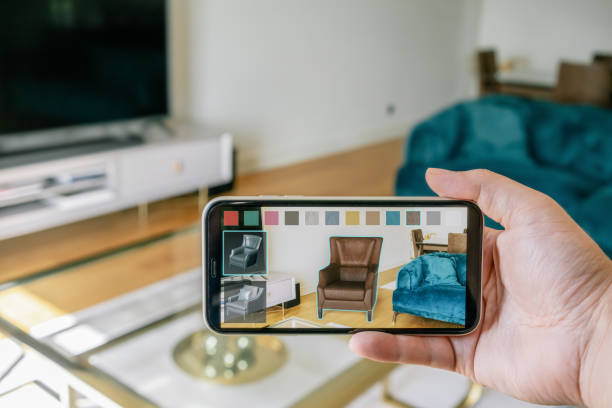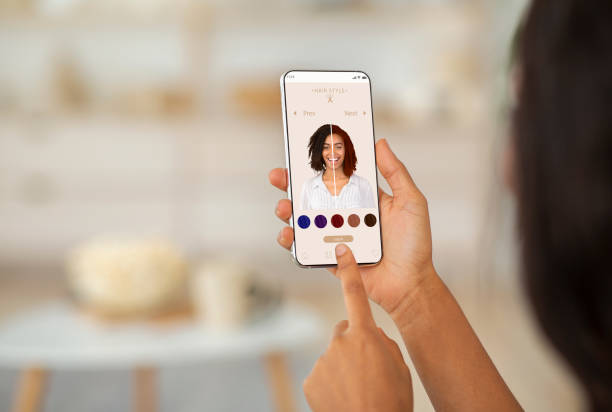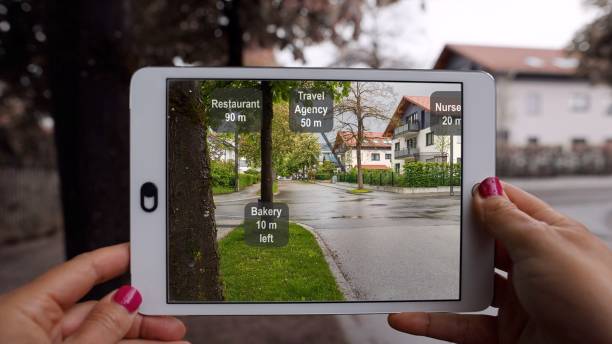Last Updated on November 28, 2022

Augmented reality (AR) is a technologically augmented version of the real world that is created through the use of digital visual elements, music, or other sensory stimulation. It’s a developing trend among businesses that deal with mobile computing and commercial apps.
One of augmented reality’s key goals, amidst the expansion of data collecting and analysis, is to highlight certain elements of the physical environment, raise comprehension of those features, and generate sensible and accessible insight that can be used in real-world applications. Big data may help organizations make better decisions and acquire insight into consumer purchasing habits, among other things.
Understanding Augmented Reality
Augmented reality is evolving and becoming increasingly widely used in a variety of applications. Marketers and technology companies have struggled to fight the impression that AR is nothing more than a marketing tool since its inception. Consumers, on the other hand, appear to be reaping concrete benefits from this feature and expect it as part of their buying process.
Some early adopters in the retail sector, for example, have developed technologies to improve the shopping experience for customers. Stores can let customers see how different products would look in different contexts by introducing augmented reality into catalogue apps. When shopping for furniture, customers point the camera in the direction of the desired room, and the product appears in the foreground.
Aside from that, the benefits of augmented reality could extend to the healthcare industry, where it could play a far larger role. One option is to employ apps that allow users to examine highly detailed, 3D images of various body systems by hovering their mobile device over the target image. For medical practitioners, augmented reality, for example, could be a useful learning tool throughout their careers.
Wearable technologies, according to some experts, might be a game-changer for augmented reality. Smart eyewear, for example, may enable a more full link between the actual and virtual domains if it improves enough to become ubiquitous, whereas smartphones and tablets only show a small fraction of the user’s landscape.
Augmented Reality vs. Virtual Reality
To improve the experience, augmented reality uses the current real-world environment and overlays virtual information on top of it.
Virtual reality, on the other hand, immerses users, allowing them to “inhabit” a completely new environment, namely one developed and rendered by computers. Users may be immersed in an animated scene or a snapshot of a real-world site that has been integrated into a virtual reality program. Users can look up, down, or in any other direction using a virtual reality viewer as if they were actually there.
Real-World Uses of Augmented Reality
Several sectors and professions have adopted augmented reality. While some organizations and businesses are creating AR-enabled goods, others are using the technology to better their own training, internal procedures, and customer service.
AR’s unique capabilities can provide “hands-on” teaching and realistic experiences that are not limited by geography or risk.
Here are some creative and exciting applications of augmented reality technology that are currently providing benefits in a range of fields.
AR in the Medical Field

Augmented reality has been shown to be effective in the training of surgeons and is a novel technique for executing complex surgical procedures. The ability to superimpose radiographic images over live images provides for an unprecedented view of the surgical site. Although it is still a relatively young technology in the world of healthcare, it shows enormous promise.
Medical imaging is an example of AR in the medical industry. Surgeons, neurologists, and chemotherapists execute numerous forms of diagnostic in order to provide medical benefits to their patients by thoroughly evaluating their bodily parts. It’s possible that the body part is your brain, ear, heart, or lungs. You might be curious as to how medical professionals arrive at such a conclusion.
They use AR apps to figure out the disease’s end-to-end structure, margins, and shapes, such as tumours or cancer. After they explore the bodies of their patients in an interactive three-dimensional augmented format, those programmes give them essential insights. All of this has the potential to make intermediate or low-survival-rate procedures not only safer but also more precise.
AR in smartphones

AR has stretched the existing limitations of your mobile devices to allow you to see in real-time what you’ve been thinking about for a long time. All of this has been made possible by mobile applications that use augmented reality technology, whether it’s measuring the height and width of a kitchen table or customising the environment based on your interest in real-world entities like a range of furniture.
The Ruler App is one of the most well-known AR-based mobile apps of 2021 (5 million plus downloads). This app works with Android, iPads, and iPhones and can be used as an on-screen ruler to measure the proportions of real-time objects like sofas, pillows, tables, and vases.

Businesses are also taking advantage of the AR features in smartphones. I know of a small business that sells temporary hair dye that created an AR filter on Instagram where people could see how they looked in different hair colours. As people tried the filter, they began to crave the looks and that drove up sales for them.
AR in Travel and Tourism

Travel and Tourism are concerned with the management of customers or visitors who will be exploring every nook and cranny of their destination while staying in accommodations supplied by a travel agent or tour operator.
Various agencies and hotels are employing augmented reality (AR)-based travel apps to let their customers explore their destinations without sacrificing the quality of transportation or culinary venues, with interactive dish menus that map out tourists’ eating preferences. World Around Me, Smartify, and AR City are a few AR travel apps utilised by agencies and hotels. Whether you’re seeking transportation, petrol stations, or ATMs, or you’re delighted to check the brochures of travel businesses offering low-cost accommodations, any of these applications will help you find what you’re looking for.
AR in Classroom Education

Teachers and other educators, such as college professors, are willing to collaborate with Augmented Reality so that students of all ages can fully acquire the learnings of the subjects covered in their curriculum. The disciplines are either related to physics, mathematics, or psychology, and their principles are well conveyed at a lower cost because AR Technology does not require infrastructure.
Students can learn a new language like German, Spanish, or French using Mondly at any time and without any additional equipment (an AR language assistant). Students can also use Google Earth to examine volcanoes and terrains found at the geological nodes of planet Earth in a fascinating and engaging way. Google Earth allows students to zoom, rotate, and tilt the three-dimensional views that surround our world.
Such Augmented Reality apps are compatible with multiple Android and iOS versions, allowing teachers to easily transfer knowledge and students to expand their learning experience with less effort. As a result, students will not be able to deny themselves such flexibility while learning, allowing them to better manage their time and enhance their skills through the use of such beneficial Augmented digital platforms.
The Future of AR
The applications of augmented reality discussed above are only the tip of the iceberg. AR is a potentially powerful tool that could have a very substantial effect on the way we live our lives in the near future. AR is expected to feature as a key component in the metaverse and Web 3.0. The use of AR is expected to increase along with the commercial introduction of 5G technology across the globe.
Before you go…
Hey, thank you for reading this blog to the end. I hope it was helpful. Let me tell you a little bit about Nicholas Idoko Technologies. We help businesses and companies build an online presence by developing web, mobile, desktop and blockchain applications.
As a company, we work with your budget in developing your ideas and projects beautifully and elegantly as well as participate in the growth of your business. We do a lot of freelance work in various sectors such as blockchain, booking, e-commerce, education, online games, voting and payments. Our ability to provide the needed resources to help clients develop their software packages for their targeted audience on schedule.
Be sure to contact us if you need our services! We are readily available.











